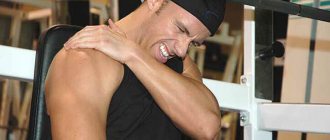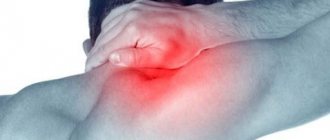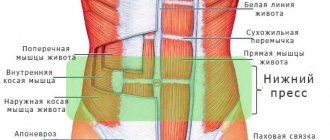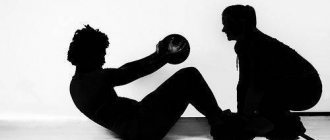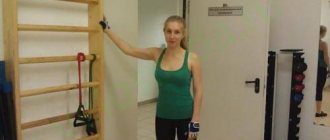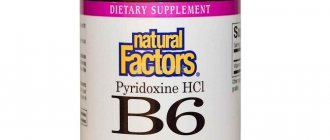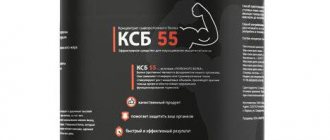Osteopathy in sports helps to quickly recover from injuries and improve strength and endurance. What injuries do athletes most often encounter? What results should you expect from osteopathic correction?
The musculoskeletal and muscular systems of athletes are constantly exposed to overstrain during training and competitions. Such enormous loads often lead to injuries that take time away from recovery. Osteopathy for athletes helps to quickly return to sports after injury, use the body's hidden reserves, adapt to stress and learn to avoid overtraining.
Even in the absence of complaints, athletes need to regularly visit a specialist several times a year. Then he will promptly identify and eliminate disturbances in the body, increase endurance, and speed up recovery.
Osteopathy is a treatment method based on accurate knowledge of human physiological characteristics and biomechanics. Its main task is to find the cause of the processes that prevent organs from functioning harmoniously and to launch self-healing processes.
Sometimes the injury may not have obvious symptoms, but in the future its consequences will appear, which will affect achievements in sports and health in general. An osteopath will detect pathology in the early stages, correct changes in time and help improve athletic performance and reduce the risk of new injuries.
Most common sports injuries
Athletes most often experience damage to the following structures:
- lower extremities: foot, knee and ankle joints, calf muscles, Achilles tendons;
- various parts of the spine, ribs, collarbones;
- upper extremities: hand, biceps tendon, rotator cuff, elbow, wrist joints.
Sprains, dislocations, subluxations, and fractures most often occur due to muscle imbalance, fascial tension, due to an incorrect approach to load distribution and its uniformity. Osteopathic correction successfully copes with such disorders.
What are the consequences after damage?
The consequences of injuries can be divided into two types - local and remote.
Local. After an injury (even a minor one at first glance) to joints, ligaments or internal organs, the tissues of the affected area lose their mobility, blood flow and innervation are disrupted. Nearby muscles contract, displacing whatever structures they support. As a result of this, passing blood vessels, lymphatic vessels, and nerves are compressed - thus, the nutrition of not only damaged, but also nearby tissues is affected.
Distant. Tissue tension in the damaged area causes a cascade of compensations and decompensations:
- tension of fascia throughout the body;
- shift of the center of gravity towards the damage;
- impaired mobility of tissues, organs, joints on the damaged side;
- tension of the muscles on the opposite side of the body in order to stabilize it (keep it upright).
Foot, ankle and leg injuries
These parts of the leg allow you to walk, run, jump, provide shock absorption and keep the body upright.
Achilles tendon sprain or rupture
This is damage to the tissue fibers that connect the triceps muscle and the heel bone. There is acute pain and severe swelling in the ankle. When the tendon is completely ruptured, a characteristic cracking sound is heard and the triceps muscle contracts into a ball.
The cause of injury may be:
- unsuccessful landing after a jump;
- sudden acceleration or jerking from an awkward position;
- insufficient warm-up;
- poor foot support in shoes.
© Aksana — stock.adobe.com
First of all, you need to limit the mobility of the joint with a figure-of-eight bandage, apply cold and elevate the limb. In the future, an examination by a doctor is required to establish an accurate diagnosis and prescribe treatment. If a tendon ruptures, immediate hospitalization and surgery are required.
The best prevention is to maintain muscle tone and joint mobility by performing an appropriate set of exercises daily, as well as using sports shoes that securely hold the foot.
Ankle sprain
This is a partial or complete tear of the fibers of the ankle ligaments.
Increasing over time, acute pain in the foot - it is impossible to even stand on the affected leg. Redness and swelling occur, and in severe cases, hematoma and blood entering the joint cavity.
The main causes of sprains are falls, bruises, or a blow to the ankle. Exercise on uneven or unprepared surfaces can also lead to this injury.
© 6m5 — stock.adobe.com
To prevent further damage, a fixing bandage or L-shaped splint is applied to the foot and lower leg. It is advisable to cool the affected area with a compress. Then place the injured leg on a comfortable elevation. In complex cases, treatment is carried out in a hospital and surgery may be required.
Prevention measures include various types of exercises that strengthen and stretch muscles and ligaments. Saturating the body with vitamins and minerals also helps maintain the functioning of tendons and joints.
© obereg — stock.adobe.com
Ankle fracture
This is a fracture of the fibula (lateral, outer malleolus) or tibia (medial, inner malleolus).
A characteristic crunch or click combined with sharp pain in the ankle and the inability to step on the leg may be a consequence of a fracture. Severe swelling and hematoma quickly appear. The pain does not decrease over time, and pathological mobility of the joint occurs. When pressing on it or the fibula, severe pain is felt.
© charnsitr — stock.adobe.com
Depending on the severity of the injury, first aid is provided in the following sequence:
- Raise the injured limb and place it on a soft cushion.
- In case of an open fracture, apply a sterile bandage without deforming the wound or displacing bone fragments. If there is bleeding, take measures to stop it.
- Secure the joint using a splint or other available means.
- Apply cold to the injury site.
- Reduce pain using an analgesic.
- Ensure that the victim is transported to the emergency room.
Accurate diagnosis and treatment is carried out in a medical institution.
A fall or an unsuccessful landing after a jump with a twisted foot are the main causes of an ankle fracture.
A balanced diet and an active lifestyle help maintain muscle tone, while exercise and training improve coordination and reduce the risk of such an injury.
© Elnur — stock.adobe.com
Sprained or torn calf muscles
This is an overstretch, partial or complete rupture of muscle fibers.
Sharp and severe pain, which may be accompanied by cramps, difficulty moving the limb, the appearance of swelling and hematoma at the site of injury and a clear change in the shape of the lower leg are the main signs of a sprain or rupture.
Insufficiently warmed muscles, their increased stiffness, weakness, or, conversely, overtraining are the main causes of such injury. Most often this happens during intense running, sudden acceleration or jumping. Various squats and other similar exercises with weights in bodybuilding often lead to such damage.
© rob3000 — stock.adobe.com
First aid consists of ensuring a stationary and comfortable position for the injured limb. Cold is applied to the shin and a fixing bandage is applied.
In mild cases, complete absence of load is enough to ensure for two or three days. If a muscle ruptures, longer medication treatment and physiotherapeutic procedures will be required.
Before any competition, training or physical exercise, be sure to do a warm-up to stretch and warm up your muscles.
Articles on the topic
2K 3 Ankle fracture - causes, diagnosis, treatment
2K 1 Sprains and tears of the muscles and ligaments of the lower leg
1K 2 Sprained ankle or ankle
2K 1 Achilles tendon sprain - symptoms, first aid and treatment
6K 1 Dislocation of the foot - first aid, treatment and rehabilitation
8K 2 How to treat a sprained ankle?
Consequences of an ankle injury
The ankle joint (due to its structure) constantly experiences enormous stress. Its anatomical features determine a large number of possibilities for its damage. In case of injury, a sharp stretching of the ligaments occurs (partial rupture is possible). Clinically, this is manifested by severe pain, swelling, and impaired joint function.
In the absence of timely and adequate therapy, an athlete may face the following consequences:
- long-term and persistent pain syndrome;
- proliferation of connective tissue and scar formation at the site of damaged ligament integrity;
- limping;
- twisting of the foot when walking.
In the area of the joint is the peroneal nerve, the fibers of which run from the lumbar and sacral vertebrae to the foot. When the ankle is injured, the nerve becomes compressed by the tendons and loses its ability to stretch. Because of this, during any movement in the lower extremities it will irritate the fibers in the vertebrae. In the future, this may manifest itself as pain not only in the lower leg, but also in the back, and treatment of the spine in this case will not bring the expected result.
Damage to the shoulder joint
Shoulder injuries in sports occur due to non-compliance with safety precautions when performing exercises. The reason is the incorrect development of training complexes.
When starting physical training, you need to make sure that all heavy elements are securely secured. An athlete lifting heavy weights must be prepared for this.
Injuries occur in situations:
- Overstrain of the shoulder joints.
- Rupture of the cartilage ring, which is located along the socket of the joints.
- Sprains.
Injuries can occur when performing knee exercises after an injury:
- Lifting the barbell while lying down.
- Lifting the barbell from behind your head.
- Pulling towards the chest.
Dangerous injuries include shoulder dislocation. A sharp pain appears, the joint changes its shape, and a crunching sound is heard when moving. The patient cannot move his arm.
A fracture of the collarbone is less common. Treatment is carried out by applying a fixing bandage, possibly using plaster.
In bodybuilding, athletes experience shoulder muscle dislocations and strains. Bursitis can develop with heavy physical exertion. It manifests itself as pain and swelling in the area of injury.
Medical intervention when a problem is detected
If an injury occurs, you must stop training, fix your hand in one position and apply ice.
When the shoulder joint is dislocated, it is adjusted by specialists under local anesthesia.
Fractures are treated by applying a cast. For bruises, apply a bandage to the patient, cooling the bruise site.
How long will it take to recover?
The damaged joint should not be stressed for 2 weeks. To reduce pain, the drugs Ketanov and Ibuprofen are prescribed.
You can start training when the feeling of discomfort in the damaged area completely disappears.
Training should be carried out according to a strict scheme:
- The first days, do a light warm-up, with a predominance of circular movements.
- Weight loads are increased gradually. The course of increasing the load lasts at least 15 days. In difficult cases it increases to 40.
An important point in recovery is the introduction of supplements into the diet to strengthen ligaments. The athlete must take preventive courses at least once a year.
The prognosis is favorable.
Consequences of a fall
In athletes involved in alpine skiing and snowboarding, the sacrum, shoulder and wrist joints, and collarbones are most often damaged. But also during a fall (which is typical for these sports), the cervical spine experiences serious overload, the dura mater and spinal ligaments are injured, a reflex muscle spasm occurs, and the vertebrae change their position. The vertebral arteries passing through them are compressed. As a result, the movement of blood to the brain becomes difficult. This is felt in the form of headaches, fatigue, dizziness, and memory impairment.
The consequences of a trauma can be different: some appear after a short period of time or immediately after the injury, others much later. It can be difficult to associate both of them with the trauma that occurred, especially the long-term consequences. Therefore, therapy is often carried out not entirely correctly. An osteopath is able to establish this cause-and-effect relationship, prevent the negative impact of damage on other structures of the body, and eliminate pain.
"Stress" fractures
They arise due to excessive and uniform loads, under which microfractures occur at the level of structural units of bone tissue. This process triggers natural regeneration and callus formation. Subsequent overloads lead to the same consequences; bone tissue is forced to reorganize its structure over time. In the future, a real fracture may occur with disruption of the integrity of the bone.
The help of an osteopath is invaluable both during the treatment of this pathology and during rehabilitation. When injured, intact structures are also involved in the process: the load on the muscles and spine is unevenly distributed, and the pelvic bones become distorted. The doctor will identify changes and eliminate them using gentle, painless techniques.
Shoulder injuries
This is the part of the arm from the elbow to the shoulder joint, which has a complex structure and constantly experiences significant loads and is therefore often injured.
Shoulder dislocation
This is a displacement of the head of the humerus bone, which leads to loss of contact with the bed of the scapula and complete loss of function of the joint.
Severe pain immediately occurs, the ability to control movements of the shoulder is lost, and a visually noticeable change in its shape and swelling appears.
A fall on the shoulder, a blow, or sudden muscle tension in an unnatural position of the arm are typical cases of shoulder dislocation. Most often this happens when playing volleyball, basketball, equestrian sports or contact martial arts.
© joshya — stock.adobe.com
First of all, it is necessary to ensure the immobility of the joint and a comfortable position of the arm using a bandage (the forearm is bent at 90 degrees to the shoulder).
To relieve pain, apply ice and give an anesthetic. To correct a dislocation, the victim must be taken to a medical facility.
Constantly maintaining muscle strength and elasticity of the shoulder ligaments through daily special exercises helps prevent injury.
Clavicle fracture
This is the destruction of the bone that connects the shoulder blade and the sternum.
The injury is accompanied by acute pain at the site of injury, which sharply intensifies when the shoulder hangs down.
Excessive stress from falling sideways onto a straight arm or shoulder often leads to this injury.
First aid consists of relieving the severity of pain using an analgesic and immobilizing the broken collarbone. For this purpose, various types of support bandages are used, which help reduce pain and prevent repeated damage to surrounding tissues. The victim must be taken to the emergency room as quickly as possible.
© stockdevil — stock.adobe.com
Practicing motor coordination and falling safety techniques reduces the risk of such injuries.
Rotator cuff injury
This is damage to the joints of one or more rotator cuff muscles.
Pain sensations appear in the shoulder joint, which intensify with any movement of the arm and can radiate to other parts of the body (forearm, hand, neck). Sometimes weakness is felt and the range of changes in joint position decreases.
Constantly moving the arm with maximum speed and force places excessive stress on the shoulder joint and often leads to disruption of the integrity of the connective fibers of the shoulder cuff.
For minor injuries, it is enough to rest the injured limb and periodically apply a cold compress to the shoulder during the first two days. Then use warming ointments. In case of acute pain, ligament rupture is possible, and it is better to consult a doctor immediately.
© logo3in1 — stock.adobe.com
Training the mobility and strength of the shoulder muscles and timely treatment of minor injuries can help maintain the health and performance of the rotator cuff for a long time.
Recovery after training and competitions
The doctor uses techniques that have a complex effect on the body:
- eliminates internal blocks;
- normalizes blood circulation and lymphatic drainage in injured tissues;
- improves movement in joints, mobility of the spine;
- helps the body use its internal reserves for rehabilitation.
Thanks to the effect on tissues that were once damaged as a result of injury, osteopathic treatment normalizes muscle tone, improves the flow of fluids, increases the athlete’s resistance to prolonged stress, and prevents many professional sports diseases of the musculoskeletal system.
Ways to prevent injury
In order to protect their own health and minimize the possibility of injury during strength training, each athlete should adhere to the following recommendations:
- Strict adherence to safety regulations. This is especially true when working with free weights.
- Gradual weight gain (load progression). In order to get stronger and gain muscle mass, it is important to increase the weight of barbells, dumbbells, etc. over time. It is necessary to pay due attention to improving the technically correct execution of exercises, and also to wait until the body gets stronger and is ready to work with increased load.
- Mandatory warm-up. Before you begin strength training, you must first warm up your muscles. To do this, use a 10-15 minute warm-up when indoors or a 15-20 minute warm-up outdoors, especially in the cool season.
- Do not be distracted and try to show maximum concentration. When working with heavy weights, it is strictly forbidden to be distracted by extraneous things, because in this case it is enough to simply lose control and balance, which can easily injure the athlete.
- Use of special sports equipment. During strength training, it is recommended to wear an athletic belt, comfortable shoes and clothing that will not restrict movement. This point especially applies to working with free weights.
- Follow all instructions from the trainer. You should not try to learn a new technique or increase the weight without informing the instructor.
- Do not start training if you feel unwell or tired (overtraining). Even with a common cold, it is necessary to remain in bed and also give your body the opportunity to fully recover. Playing sports, especially strength sports, with a weakened body is fraught with the risk of getting new or aggravating old injuries.
- Create and stick to an individual training plan. The number, frequency and intensity of each approach must be carefully planned.
Good luck! Be healthy!
How does an appointment with an osteopath work?
At the first visit, the doctor examines the patient, paying attention to the characteristics of the musculoskeletal system (posture, presence of asymmetry, spinal curves, type of gait). An osteopath uses his hands to identify existing disorders in internal structures and gradually eliminates them, significantly improving the patient’s condition.
In addition to osteopathy, treatment may include: massage, acupuncture, selection or individual production of orthopedic insoles, kinesiological taping, as well as other therapeutic and preventive procedures.
Osteopathic techniques help to recover faster after intense stress, injury, and avoid serious consequences in the future.
Treatment results
An osteopath helps:
- Eliminate pain and cope with chronic diseases. The doctor will help in the treatment of arthrosis, osteochondrosis, injuries to the head, spine, limbs, joints, damage to muscles, ligaments and tendons, and diseases of internal organs. After the first sessions, improvement occurs, and the athlete no longer needs to take painkillers.
- Significantly improve performance in sports. Training and competitions are constant intense loads, the improper distribution of which and overexertion lead to injuries. And injuries disrupt the balance of the body, cause compensatory parasitic muscle tension, increase fatigue, and worsen athletic performance. The task of an osteopath is to help an athlete bear loads more easily, improve body balance, increase endurance, activate internal resources, and quickly rehabilitate after injuries.
- Strengthen health, bring the body into a state of harmony. Osteopathic correction successfully eliminates disorders that prevent internal structures from functioning smoothly.
The principles of osteopathy are based on the body’s ability to heal itself, therefore its methods are painless and have virtually no contraindications. In his work, the doctor uses knowledge in several areas at once: anatomy, neurology, traumatology, therapy. This allows you to timely identify violations of the position of bones, violations of the biomechanics of joints, body symmetry, and establish a connection between complaints and old damage.
Hip and hip injuries
The femurs and hip joint provide all human motor functions.
Stress fracture of the femur
This is a disruption of the normal regeneration process of the femoral bone tissue caused by excessive stress.
In the initial period, pain occurs only with hip movements and is felt in the groin area and inner thigh. If stressful conditions persist, the pain syndrome intensifies and a complete bone fracture may occur.
© praisaeng — stock.adobe.com
Constantly strenuous training or a sharp increase in its intensity leads to an imbalance in the tone of the thigh muscles and creates an increased load, which provokes the occurrence of a stress fracture.
If you suspect a stress fracture, you should immediately contact a medical specialist to confirm the diagnosis and receive recommendations for treatment and restoration of performance.
The correct training system and gradually increasing its intensity help reduce the risk of such an injury.
Bursitis of the hip joint
This is an inflammation of one of the synovial bursae of the hip joint.
Sharp pain is felt in various parts of the outer thigh, which intensifies during flexion and extension of the hip.
Prolonged intense loads on the hip joint or severe injury from a fall can provoke the onset of an inflammatory process in the synovial bursa.
© Aksana — stock.adobe.com
It is necessary to stop training, minimize movement of the affected limb, and treat with anti-inflammatory drugs and special exercises. If the symptoms do not go away, physiotherapeutic procedures or cortisol injections into the affected area are prescribed.
Exercises to maintain the tone and elasticity of all thigh muscles will help maintain healthy hip joints.
Groin strain
This is partial or complete destruction of the connective tissue at the site of attachment of the long adductor muscle to the femur or pubis.
A sharp pain and a characteristic crunch immediately occurs, which is sometimes accompanied by cramps, swelling and hematoma at the site of injury.
Poor physical fitness and technical errors when performing exercises are the main causes of groin strain.
© entoh — stock.adobe.com
To reduce swelling and pain, apply cold and secure the joint with a bandage or splint. An anesthetic ointment can be applied to the injured area.
Mandatory full warm-up and regular stretching exercises reduce the risk of such an injury.
Hamstring strain
This is a tear in one of the three muscles of the back of the thigh (most often the biceps).
The appearance of aching pain and some restrictions when moving occurs in mild cases. Severe pain, significant limitation of mobility, multiple hemorrhages along the entire back surface of the thigh are signs of a severe sprain.
Jerking loads and sudden accelerations with unheated or weakened muscles are typical causes of such injuries.
© Anatomy-Insider — stock.adobe.com
Cold compresses, an elastic bandage and limiting the load on the affected limb are sufficient measures for minor injuries. In difficult cases, you should contact a medical specialist to clarify the diagnosis and prescribe treatment.
When doing warm-ups or weight-bearing exercises on your legs, you should pay more attention to stretching and strengthening these “lazy” muscles.
Articles on the topic
2K 1 Dorsal thigh stretch
2K 2 Sprained inguinal ligaments: symptoms, diagnosis, treatment
1K 1 Bursitis of the hip joint: symptoms, diagnosis, treatment
2K 1 Fracture of the femur: types, symptoms, treatment tactics
1K 0 Pelvic fracture - causes, clinical signs and treatment
1K 0 Injuries to the scrotal organs - symptoms and treatment
How to save the result
Osteopathy allows for effective treatment of injury, identifying pathological conditions and consequences of injuries that prevent athletes from achieving high results.
For those interested in a successful career, an osteopath should be a must-visit physician. The number of sessions is directly determined by the presence of identified problems and the level of stress experienced by the athlete.
Our clinic’s doctors will help you prepare for competitions, recover faster from injuries, and create an individual program to support the athlete. Osteopathic techniques will be effective even for chronic diseases that have not been identified using traditional research methods. The doctor’s task is to find the cause and comprehensively influence it, relieving the patient of disturbing symptoms.
First aid in the gym
Although prevention is better than cure, all incidents in the gym cannot be avoided. So, let's learn the basic principles of behavior in case of injury:
– Bruises, contusions, wounds: some of the less serious negative “consequences” of exercise. In case of swelling, you should contact the staff and ask for a cold compress. However, damage to the skin requires disinfection and sealing of the wound.
– joint sprains: cooling the injury site, seeking medical help.
– fractures and sprains: cold compress and interruption of training, sometimes necessary medical attention.
Every gym should have a first aid kit. If you have an accident at the gym, don’t hesitate to ask for help. The staff and instructors will be happy to take care of you and help you call for medical help if necessary.
EcoFit.info
